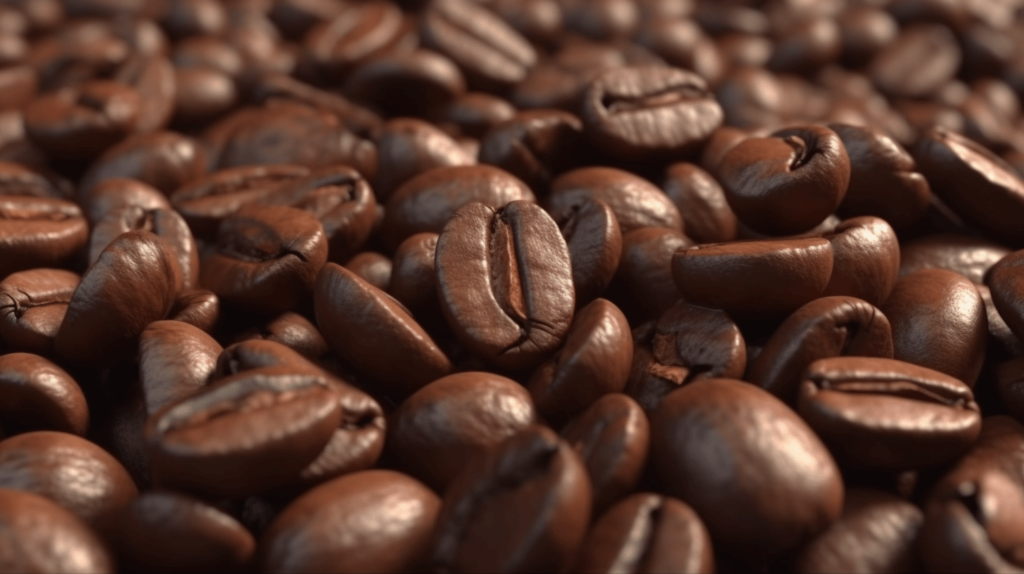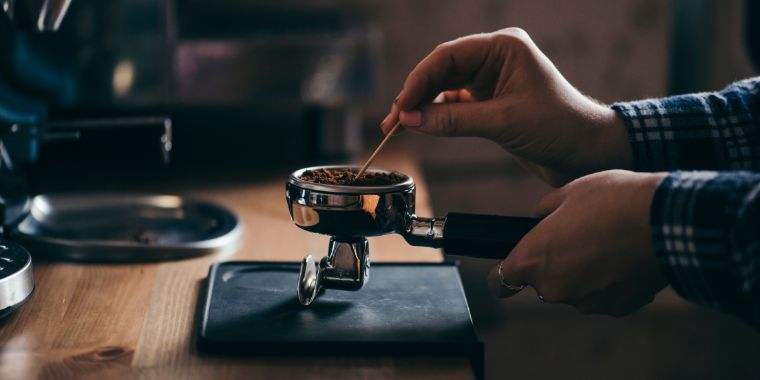In this blog post, I’ll dive deep into the world of under-extracted espresso, exploring its causes, identifying its signs, and most importantly, how to fix it.
I’ll share my personal experiences and insights, making sure the information is easily digestible and engaging for you.
Why Is My Espresso Under-Extracted
I’ve come across my fair share of under-extracted shots. There are several factors that contribute to this issue, and I’d love to share with you what I’ve learned through trial and error.
Let’s take a look at some common reasons:
Coffee beans

Not every coffee bean is a perfect match for espresso.
When it comes to single-origin coffee, the results can be quite hit-or-miss.
Beans with a rich, fruity profile often shine when brewed at lower temperatures and benefit from shorter extraction times.
Last but not least, if you’re opting for a light roast instead of a dark one, you’ll likely need to grind the beans finer, as their consistency is quite distinct.
Temperature
Nailing the right water temperature is crucial for proper espresso extraction. If your water is too cold, it can lead to under-extracted espresso.
Aim for a temperature between 195°F and 205°F (90°C and 96°C) for optimal results. I’ve found that maintaining this range consistently helps me avoid under-extraction woes.
Equipment Cleanliness

Trust me on this one – keeping your espresso machine clean is essential for pulling great shots.
Make sure your portafilter, shower screen, and other components are spotless.
A dirty machine can negatively affect the taste and extraction of your espresso. In my experience, regularly cleaning my equipment has made a world of difference.
Grinder Quality
Investing in a decent grinder is a game-changer. A consistent and precise grind is key to avoiding under-extraction. I’ve found that using a high-quality grinder with proper burrs and grind settings has significantly improved the consistency of my espresso shots.
Channeling

Channeling occurs when water finds the path of least resistance through your coffee puck, leading to uneven extraction.
This can be a major contributor to under-extracted espresso. I’ve discovered that using the right distribution and tamping techniques helps minimize channeling and produces more balanced shots.
What Does Under-Extracted Espresso Taste Like
There are 3 major things that you should pay attention to spot under-extracted espresso:
Sour and sharp taste:
When it comes to coffee, a well-balanced acidity can be a delightful feature, enhancing the flavors and bringing life to your cup (for example in single-origin coffees).
However, unbalanced acidity in under-extracted espresso can result in a sour, overly tangy, and sharp taste.
In my experience, sour coffee usually lacks other flavors to balance out the acids, making it a clear sign of under-extraction.
Really Thin Flavor:
Under-extracted coffee doesn’t fully release the flavors from the grounds, leaving sugars, oils, and the balancing bitter notes trapped inside. I’ve found that under-extracted espressos taste incomplete and unfinished.
Salt, Salt, Salt:
Believe it or not, under-extracted coffee can have a subtle salty flavor. While it’s not overpowering, the saltiness is a real phenomenon experienced by many. If you detect a hint of salt in your espresso, it could be a sign of under-extraction.
How to Fix Under-Extracted Espresso
I know how crucial it is to understand the steps to fix under-extracted espresso. Trust me, a few tweaks here and there can make all the difference!
Let’s explore some essential adjustments you can make to improve your espresso game:
1. Adjusting Grind Size
Making slight changes to the grind size can significantly impact the taste and quality of your espresso.
Grind consistency is key to a balanced espresso shot. If your grounds are uneven, you’ll likely experience uneven extraction, which can lead to under or over-extraction.
Investing in a high-quality grinder with good burrs is a game-changer. The result? A more consistent grind and better-tasting espresso.
Once you’ve achieved a consistent grind, it’s time to fine-tune the grind size to optimize extraction.
For espresso, you’ll typically need a fine grind, but the exact size may vary depending on your coffee beans and equipment.
2. Modifying Brew Time
Aim for a shot that takes around 25-30 seconds to extract.
Here’s a valuable lesson I’ve learned along the way: brew time and grind size go hand in hand.
As you adjust your grind size, it’s essential to keep an eye on the brew time to ensure a well-balanced extraction.
If you find that your shot is extracting too quickly, try a finer grind. If it’s taking too long, go for a coarser grind.
3. Regulating Water Temperature
Let’s discuss the optimal water temperature for espresso extraction and some methods for controlling it.
The ideal water temperature for extracting espresso lies between 195°F and 205°F (90°C and 96°C).
Maintaining a consistent temperature within this range results in a well-extracted shot with a balanced flavor profile.
Be mindful of this sweet spot as you fine-tune your espresso-making process.
Methods for Controlling Water Temperature
There are several ways to regulate water temperature when brewing espresso.
Most modern espresso machines come with built-in temperature control systems, but if you’re working with an older or more basic model, you can still ensure proper temperature management.
Pre-heating the group head and portafilter, as well as using a temperature-controlled kettle for manual machines, can help maintain a consistent water temperature for optimal espresso extraction.
4. Calibrating Pressure
A good espresso extraction requires a delicate balance of pressure. Typically, a pressure of 9 bars is ideal for espresso, although some machines may perform better at slightly higher or lower pressures.
While some espresso machines come with pre-set pressure settings, others allow for manual adjustments.
If your machine offers this option, you can fine-tune the pressure according to your preference and the specific beans you’re using.
In my journey to espresso perfection, I’ve found that making small pressure adjustments can significantly impact the quality and taste of my shots.
5. Adjust the Dose
The amount of coffee grounds you use can significantly impact your espresso’s taste and quality. Typically, a dose of 18-20 grams is a good starting point for a double shot of espresso (which is a standard these days), but feel free to experiment with your specific machine and coffee beans.
6. Check Your Coffee’s Roast Date
Freshness matters when it comes to coffee beans, and I can’t emphasize this enough! Using coffee beans with a recent roast date can drastically improve the taste of your espresso.
Ideally, you should aim to use beans within two weeks to a month of their roast date for optimal flavor.
7. Use a Bottomless Basket
Switching to a bottomless (or naked) portafilter basket has been a game-changer in my espresso journey.
These baskets offer a clear view of the espresso extraction process, allowing you to spot any issues like channeling, uneven extraction, or improper tamping.
By using a bottomless basket, you can easily identify and correct problems, ensuring a consistently well-extracted shot.
My Tips for Mastering Espresso Extraction
Now, let’s discuss some essential tips for taking your espresso game to the next level.
Importance of Fresh Coffee Beans
As I mentioned earlier, using beans within two weeks to a month of their roast date will result in a more flavorful and aromatic shot.
Make sure to store your beans in an airtight container away from light and heat to preserve their freshness.
Using a Scale for Accurate Dosing
Accurate dosing is crucial for a well-extracted espresso. Using a scale to measure the coffee grounds ensures consistency and helps dial in the perfect shot.
It’s a small investment that can make a huge difference in the quality of your espresso.
Distributing and Tamping Techniques
Proper distribution and tamping of the coffee grounds can significantly impact the extraction process.
Make sure to evenly distribute the grounds in the portafilter and apply consistent pressure when tamping.
Experimenting with Coffee Recipes
Don’t be afraid to experiment with different coffee beans, grind sizes, doses, and extraction times.
Every coffee bean and machine is unique, so feel free to play around and find the perfect recipe for your taste buds.
My Final Thoughts
In this guide on how to fix under-extracted espresso, I’ve explored various techniques and tips to help you perfect your espresso extraction skills.
Remember, practice and patience are essential in your espresso journey.
As you continue to troubleshoot and experiment, you’ll refine your technique and ultimately master the art of espresso extraction.

